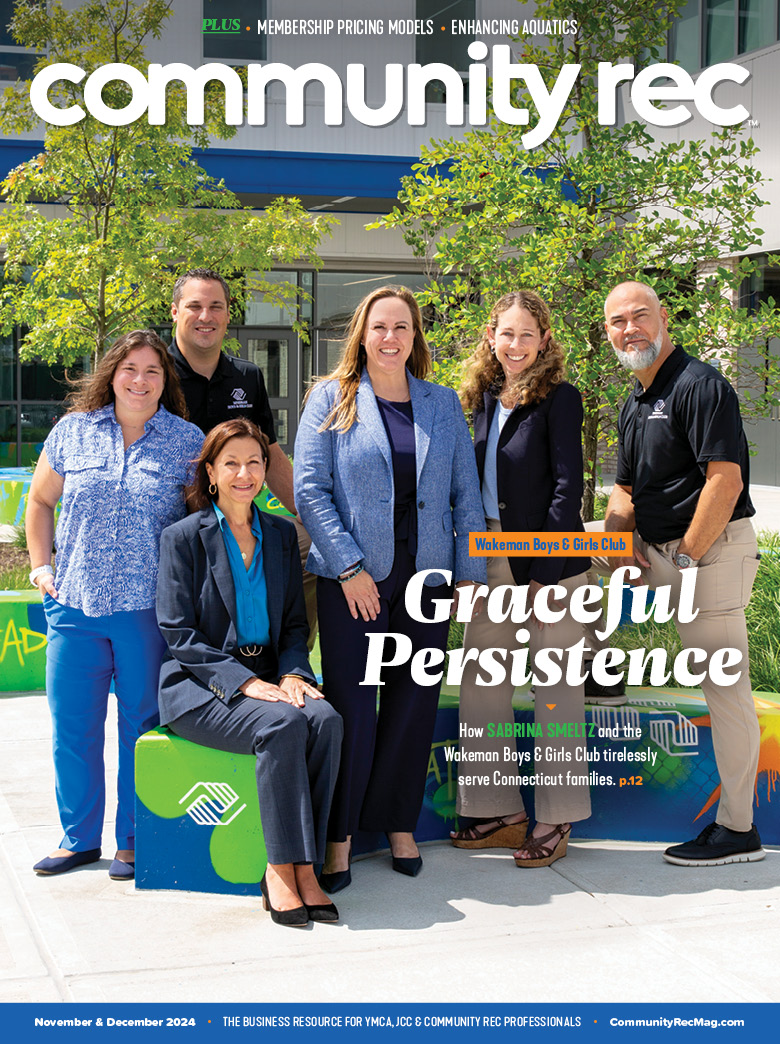Jon Kidwell is a leadership and business coach who helps leaders in mission-driven organizations succeed. This is Part Three in a six-part series devoted to helping you lead, build, care for, and navigate impending issues that will impact the future of your team and your organization. In Part Two, we addressed rebuilding personal and professional significance in your team. In Part Three we discuss restoring team member engagement.
Who’s at risk of leaving? Every. Single. Person.
About 25% of the leadership coaching I provide is with YMCA leaders. And every single leader, except the CEO, is looking for a new job. Most are open to or actively seeking work outside of the YMCA movement. This is frightening. It’s even more alarming when you consider the typical people who engage in activities, like coaching, to help themselves grow and develop.
This sample isn’t the low-engaged, mediocre performers. No, we’re talking about your passionate, personally motivated, and high-performing team members. What is it that has these team members disengaged? What are they searching for in a new job? And what can we do about it?
Case Study: The Unexpected Path to Retaining the Disengaged Executive
A medium-sized, sub $10 million YMCA was facing challenges. There were looming COVID-19 concerns, quality and safety issues in childcare, and expiring contracts for facilities. However, the situation with the largest potential impact was a key member of the team, a rising executive who was looking for another job.
This CEO, like many, was wrestling with each of these issues. And especially with this executive’s desire to leave. They were in a sort of mentor/mentee relationship, and this was weighing on them. While they were extremely grateful, and a little proud, the relationship was strong enough that this executive would be open to sharing what was on their mind. The CEO was also feeling that somehow it was related to something they were doing – or not doing – in the organization.
At this critical juncture, this CEO made a few key decisions and supported them with actions. First, was to create a clear objective for the following year and align three key goals to that objective. Next, the CEO was clear with the leadership team that together, they’d all have to support and hold people accountable. They did this because accountability to stated expectations were not a cultural norm. And finally, as a leadership team they committed that as expectations increased so would the support for the people they lead.
At the same time, the CEO choose to share their unwavering support for wavering executive no matter their decision about where to work, and the CEO expressed clearly that they wanted the executive to stay with the YMCA.
Learn More: Your Next Crisis – The Neglected Community
The CEO presented the ambitious plan and clear expectations. They tied each goal back to the objective and to the purpose of the organization. They communicated not only what they were trying to achieve, but why it was so important. Then, the CEO walked the team through how they will build their own goals and clarify key actions they will take in the coming year that support the overall goals and objectives.
Not long after the CEO communicated the objective and goals for the following year the disengaged executive came to have a conversation with them. The executive shared they had another job offer that would pay more money. And as the CEO was preparing the bittersweet ‘good for you, I wish you the best speech’ the executive said, “And I really like what we’re doing here and where we are headed. I know the vision and how I fit in. I am going to stay at the Y.” Now completely speechless, the grateful CEO thanked the executive and re-asserted their support for them.
It wasn’t just the executive’s heart and mind that changed. The Y is actively and aggressively improving childcare quality and safety, extending contracts, and the leadership team is stepping into the hard work of holding people accountable. Everyone is in agreement that as expectations increase, so will the support.
So, how do you know it is working beyond keeping that one executive and creating an initial burst of new initiative energy? Because in nine months, with this type of organizational culture and leadership, this YMCA improved childcare and expanded programming, retained team members, developed their people through the process, and added over $1.2 million of value to the organization’s bottom line.
Meet the Neglected Needs for Restoring Team Member Engagement
Mission-driven organizations, like ours, are at risk of surviving the pandemic only to be decimated by a mass exodus of passionate, talented people because their needs aren’t being met. That’s it. They are disengaged because the ambiguity and fear that exist are simply too much. And they are searching for work that will meet their needs – both personally and professionally.
The good news is it’s not too late to acknowledge what’s going on and do something about it. Whether you are the CEO or executive director leading an organization, head of a service line or team leader, now is the time to address your team’s unmet needs so they can be healthy, successful people. Because it is at the heart of our mission, it is a real expression of the value and cares you hold for them. And it is the best way to ultimately create healthy, successful organizations and communities.
Provide Unconditional Acceptance, Regardless of Approval
Acceptance doesn’t mean you agree with everything they do. It means they are welcome as they are and you are always there for them. It seems like every thought, choice, action and activity is a judgment of the individual doing it. And not just at work, this is the current culture of the day, and especially on social media.
Give your team the gift of being accepted for who they are and what they think, regardless of whether you approve of it or not. In fact, when you accept the person in spite of disagreements you build relational trust, invite and set the tone for people to disagree well, and model how to support people when the need to address behavior or performance arise.
Get Focused on a Mission-Driven Priority
If everything is important, then nothing is important. There’s no arguing there is a lot that needs to get done. But we can’t do it all. And we definitely can’t do it all at once. Spend time seeking input from trusted people – leadership team, board, team members, personal intuition and experience, peers, community – because there is wisdom in lots of advisors, and then set an inspiring course of action.
Learn More: How to Make 2022 a Mission-Driven Success
There are three key components to consider:
- Does this priority advance the mission?
- Is it clear and focused?
- Is it inspiring?
When setting a short-term vision or determining the annual objective of the organization consider these three questions. And work through them in this order. If we don’t begin with the mission first, sometimes personal agendas or overly indexing financial motives take precedent. Once it is pointed at the mission get it clear and focused so every stakeholder can articulate what is most important and what is trying to be achieved. Finally, make sure it is inspiring so everyone passionately pursues the work. A focused and inspired mission-driven objective is not only important, but it is engaging to any and all who hear it.
Replace Ambiguity with Self-Driven Action on Clear Expectations
How many of us have heard or said:
- We’re flexible, we just need to get our work done.
- We are building the plane while we fly it.
- I am not a micro-manager. Do whatever you want.
- The goals aren’t realistic anyway so don’t worry about them.
In an effort to avoid being authoritarian we often abdicate our responsibility as leaders to give clear direction and communicate expectations. And we often find ourselves managing minutia and correcting activities that don’t matter in the scheme of things. Additionally, this creates uncertainty and chaos both in the organization and in the lives of the people on our teams. And all of us will flee chaos and uncertainty for stability whenever we can.
Be clear on the expectations you have from work schedules, to the goals and objectives for the year, to deadlines and expectations for a certain quality of work. When you are clear on the direction and expectations, you can invite people to determine the goals and actions they need to achieve personal and team success. This frees you up to coach, support, be responsive to needs, and give feedback to keep everyone progressing toward the goals. It also gives your team the ability to self-manage their day-to-day, the freedom to innovate, and increases their motivation and buy-in because they were trusted to be autonomous in pursuit of a shared purpose.
Don’t choose to be confused. The longer you allow chaos and uncertainty to drive your organization and your leadership, the more chaos and uncertainty increase on your team and they will continue to disengage. I know it is challenging. The hard part is the things our team needs challenge our internal character as leaders. Not your moral, ethical character – but the character traits required for leading people. Things like courage, optimism, the ability to be proactive, our dependence on others’ approval and kind candor.
Even though it is challenging, and seems counterintuitive that some would engage people more, like accepting people in spite of their actions and holding people to high expectations, your ability to do so will directly address the needs of your team, increase their engagement and passion at work, and provide the organization with a path to success.
It’s a challenge to clearly define an organizational objective and set expectations based on it. Its another thing entirely to keep the team engaged and accountable to the work whether remote, across multiple locations or in-person. Check back and discover how to advance the mission, meet expectations, and hold people accountable no matter the work location.










